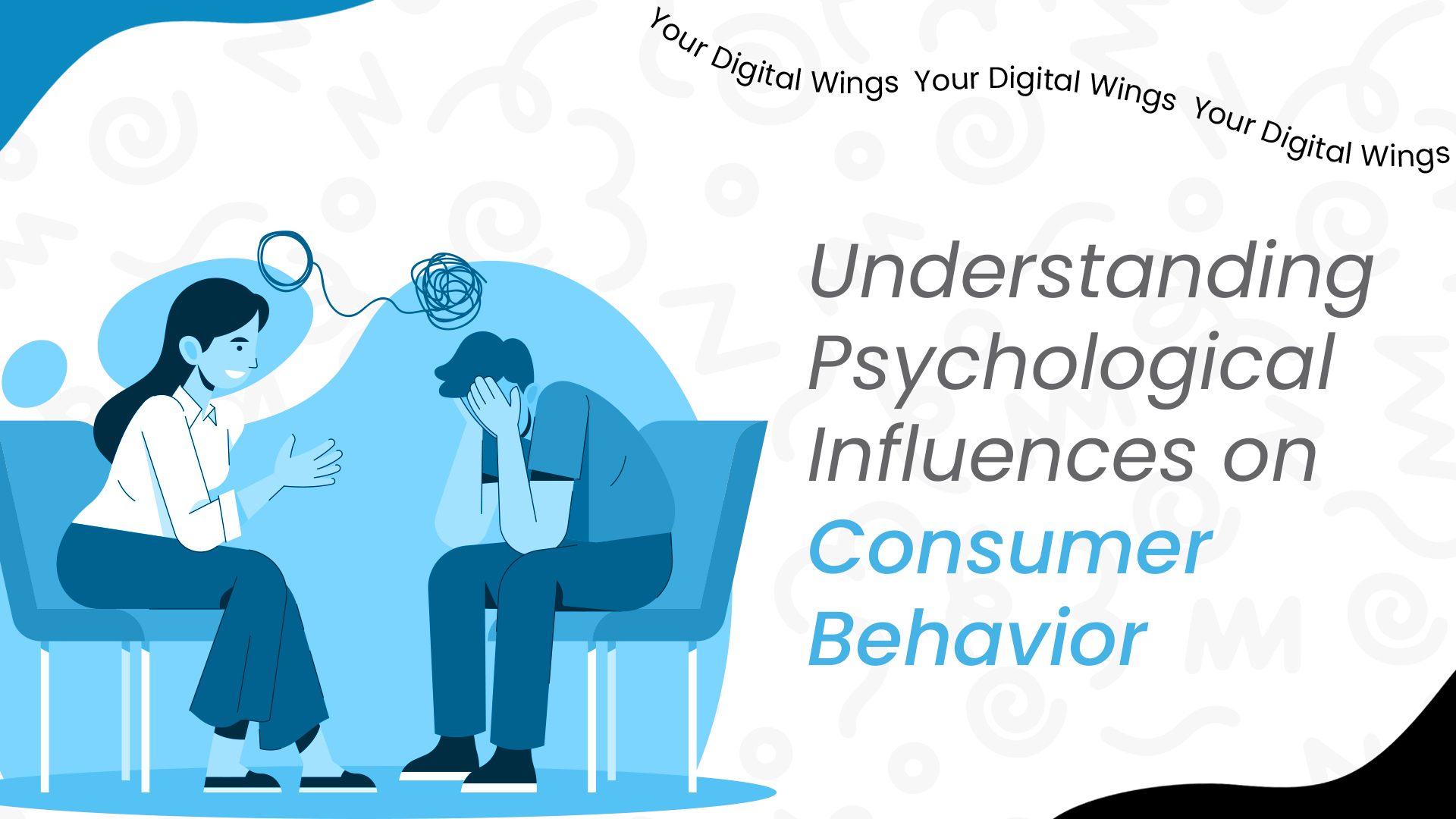How effectively you can market or promote your product is not the only factor that influences the customers to make a purchase. Apart from social and cultural factors, certain psychological influences on consumer behavior help them to make a buying decision. To have a deep understanding of psychological influences on consumer behavior, performing market research allows marketers to craft effective campaigns. Understanding psychological influences on consumer behavior helps marketers navigate the global consumer trends conveniently. This article explores the various psychological influences that affect consumer behavior.
Motivation and Consumer Behavior
A person’s inner drive to fulfill a particular need is a significant psychological factor to consider when marketing your product or service. The motivation levels are different depending upon the type of needs. Generally, individuals must set definite goals to fulfill their needs and take action to do so. Consumer look for products that can satisfy their requirements.
Products should be marketed to overcome the customer’s problems, which consumers are inherently motivated to solve. To understand motivation, psychologist A.H Maslow’s hierarchy of human needs can be really helpful. This hierarchy presents five tiers of human needs, prioritized from essential to advanced. At the base are fundamental survival requirements like food and shelter, while the higher tiers encompass complex psychological needs such as love, belonging, and self-fulfillment.
The model suggests that basic needs must be satisfied before addressing higher ones, although individuals often experience multiple needs simultaneously. This hierarchy is valuable for pinpointing consumer needs within a marketing segment. By understanding specific needs and the motivation to fulfill them, you can develop targeted segments that address any need within the hierarchy.
Perception and Brand Image
Perception is another important factor among the psychological influences on consumer behavior as it shapes the brand image in their minds. It is defined as what a consumer understands or thinks about a specific product. Afterward, how his understanding of the product leads him to buy the item or refrain from purchasing it. Even for experienced marketing professionals, it is difficult to grasp this factor of perception since every human being has a different way of comprehending the same thing.
A person’s past experiences and the persona of a brand he or she has created in his mind develop his perception. In essence, perception is the psychological factor that leads two consumers with the same needs to buy different products to fulfill those requirements. Although it is impossible to fully digest the consumer perception to craft a perfect marketing campaign, the following three processes highlight the differences in perception:
- Selective attention: This is when people focus only on information that is immediately relevant to them or those they know.
- Selective distortion: This happens when people interpret information in a way that aligns with their pre-existing thoughts, beliefs, and experiences.
- Selective retention: This involves people remembering information that is useful to them while forgetting what isn’t pertinent.
Learning and Behavioral Change
Consumers tend to change their buying behaviors after learning something new about the product. A new piece of information that is divergent from the previous one impacts how a consumer perceives a particular product. Learning changes a person’s behavior from past experiences and is most relevant to consumer marketing. Learning is a continuous process and contains two separate types:
- Experiential Learning: This type of learning occurs through the physically involved experiences. For instance, trying out an outfit at a clothing store before deciding on whether to buy it or not.
- Non-Experiential Learning: In this type of learning, we learn through our observations and investigations. Usually, marketing relies on consumer’s non-experiential learning. Businesses frequently share extensive details about their products and services through various means like customer reviews, case studies, informational brochures, and other materials.
Consumers become aware of the products or services through the experiences of others through the later type of learning. Several consumers readily use non-experiential learning opportunities and utilize insights to make their buying decisions and agreements with brands. Hence, if your brand offers these learning opportunities as part of your marketing campaigns, consumers might be more likely to buy your products. This is especially true when they’re ready to make a purchase.
Emotions and Decision-Making
Emotions play a crucial role in psychological influences on consumer behavior, significantly impacting the international buying habits of consumers. Positive emotions such as happiness, excitement, and trust can create a favorable impression of a product or brand, encouraging consumers to buy. Conversely, negative emotions like fear, sadness, or distrust can deter purchases. Marketers often harness the power of emotions by crafting compelling narratives and advertisements that evoke strong emotional responses. By understanding the psychological influences on consumer behavior, including emotions, brands can connect with consumers on a deeper level and influence their buying behavior.
Limited Decision-Making
When consumers have some knowledge about a product or service but need additional information, they engage in limited decision-making. This involves considering a few alternatives and relying on personal experiences, recommendations from friends and family, or online reviews. Common for moderately important purchases, such as buying a new smartphone, choosing a restaurant, or selecting a new brand of laundry detergent, it requires some research but isn’t seen as high-risk.
Extensive Decision-Making
On the other hand, extensive decision-making occurs with high-risk or high-investment products or services. Consumers invest significant time and effort in researching and evaluating multiple options, consulting sources like online reviews, personal recommendations, and expert opinions. This process can take days or weeks as consumers carefully weigh pros and cons before deciding. Examples include buying a house or car, or choosing a university.
Attitudes and Beliefs
Attitudes and beliefs are a vital psychological influences on consumers behavior in many ways. Attitude is basically a consumer’s deeply held views about a specific brand or a product that is based on preconceived notions, values, and beliefs. The attitude can also be developed due to a person’s religious affiliations or emotional attachments. If a consumer holds a negative viewpoint or attitude regarding a product or brand, it can drive consumers away from the product of that brand and other things associated with it.
Therefore, marketing strategists must keep a keen eye on the attitudes and beliefs of their target customers since they can affect the decision-making process. Sometimes, marketing campaigns need to focus on positively altering consumer attitudes or beliefs. However, when these attitudes and beliefs pose a substantial barrier to profitability, a brand might consider adjusting its strategy by modifying the product to align with consumer attitudes. Since changing attitudes and beliefs can be difficult, this approach is typically used by brands facing significant discrepancies.
Social and Cultural Influences
Social and Cultural Influences are essential aspects to consider when understanding psychological influences on consumer behavior. Our social circles and cultural backgrounds shape our preferences, perceptions, and ultimately our purchasing decisions. Friends, family, and social media play a pivotal role in influencing what we buy, often dictating trends and norms that we follow. Cultural values, traditions, and societal expectations further guide our choices, making certain products more appealing based on shared beliefs and practices.
Imagine you’re looking to buy a new outfit. Your friends’ opinions, the cultural significance of the clothing style, and even popular trends on social media will likely influence your decision. This illustrates how social and cultural factors intertwine with Psychological Influences on Consumer Behavior, guiding consumers toward specific brands or products.
In addition, socioeconomic impacts on purchasing decisions cannot be overlooked. Our financial status, education, and occupation influence not only what we buy but also how we perceive the value of different products. Understanding these influences helps marketers create strategies that resonate with various consumer segments, making their products more appealing by aligning with the social and cultural contexts of their target audience.
Conclusion
Understanding the psychological influences on consumer behavior provides invaluable insights for marketers. Beyond the basic act of promoting a product, factors such as motivation, perception, learning, emotions, attitudes, and social and cultural influences shape consumer decisions. By conducting thorough market research, marketers can craft campaigns that effectively address these psychological elements. Grasping the nuances of how consumers prioritize needs, perceive brand images, and learn about products helps in tailoring marketing efforts. In essence, understanding psychological influences on consumer behavior enables brands to connect more deeply with their audience, navigating global consumer trends and enhancing overall marketing effectiveness.
For expert guidance on understanding psychological influences on consumer behavior, reach out to Cretesol Tech. Our team is dedicated to helping your business build consumer-friendly strategies and achieve sustainable growth.
FAQs
What are the main psychological factors influencing consumer behavior?
Psychological influences on consumer behavior encompass several key factors. Motivation, perception, learning, emotions, attitudes, and cultural and social influences all play significant roles.
How can businesses use emotions to drive consumer purchases?
Emotions are powerful drivers of consumer behavior. By evoking positive emotions like happiness, excitement, or trust through marketing campaigns, businesses can create strong connections with consumers. Emotionally resonant advertising, storytelling, and brand experiences can foster loyalty and influence purchasing decisions. Conversely, addressing negative emotions and alleviating consumer concerns can mitigate barriers to purchase. Understanding the psychological influences on consumer behavior allows businesses to leverage emotions effectively to enhance engagement and drive sales.
What strategies can change consumer attitudes and beliefs?
Changing consumer attitudes and beliefs requires strategic approaches grounded in understanding psychological influences on consumer behavior. Businesses can employ persuasive communication strategies that appeal to consumers’ values and aspirations. Utilizing endorsements from trusted sources, such as influencers or industry experts, can also sway perceptions positively.

 United Arab Emirates
United Arab Emirates